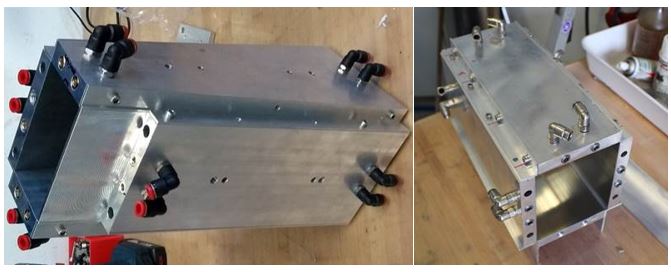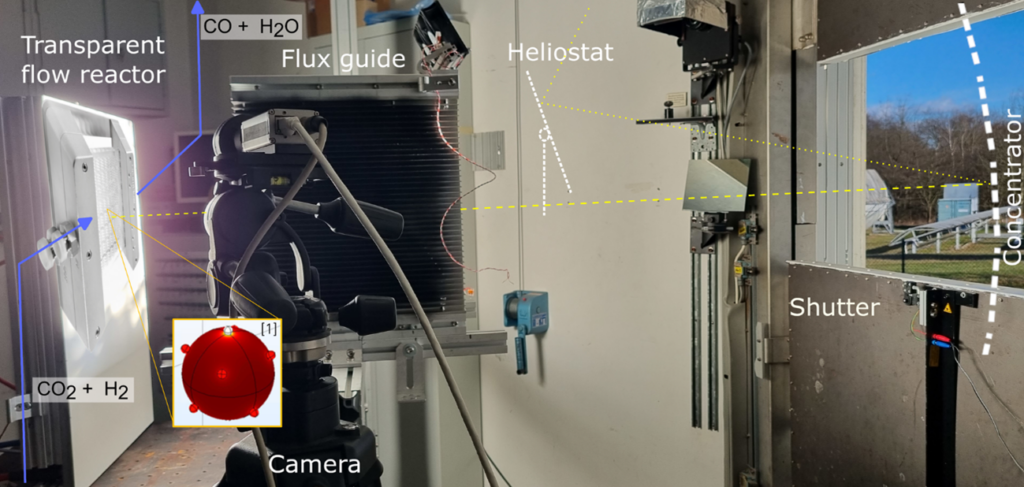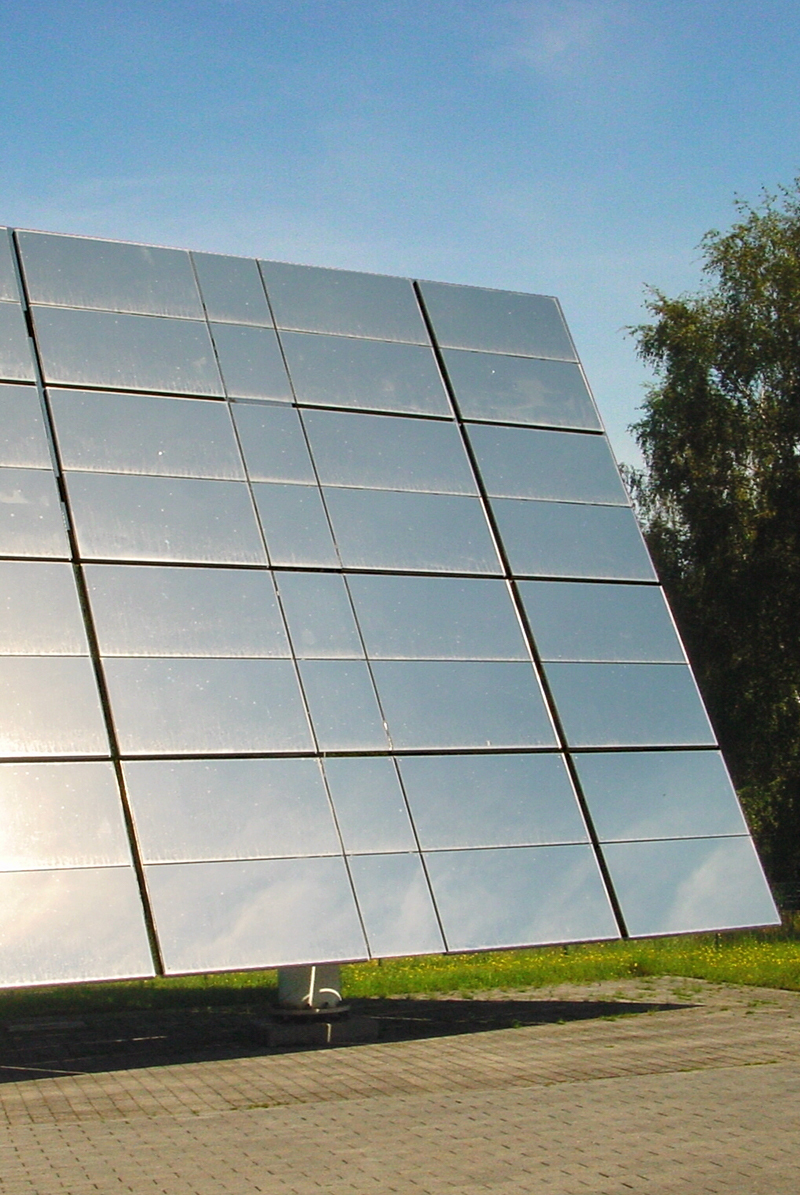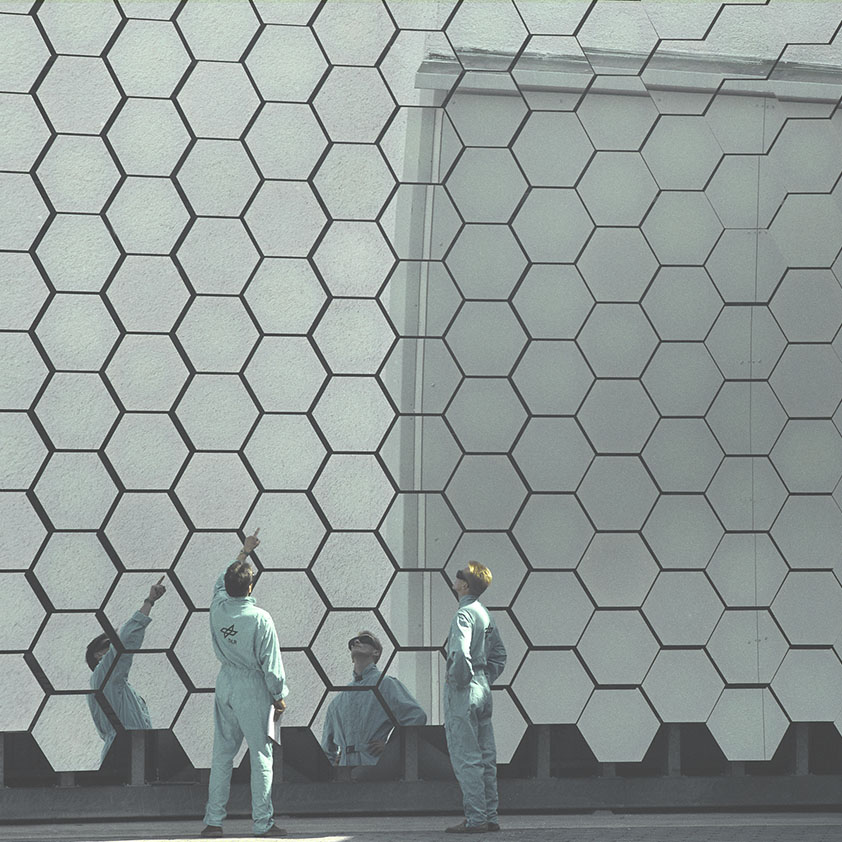Discover the development of the flow guide that illuminates the reactor homogeneously with sunlight.
Our Consortium member DLR – The Federal Republic of Germany’s research centre for aeronautics and space – is responsible for the development of the flux guide that illuminates the reactor homogenously with solar light. Moreover, they are the leaders of the WP3 (Design and manufacturing of reactor, secondary optics and light source) and the SPOTLIGHT experiments (WP5) will be performed in DLR’s solar furnace in Cologne. Thanks to their knowledge and expertise, they are responsible for the integration of all components and the optimization of the setup and will perform the experiments with TNO.
The team involved in the project has made excellent progress. They have built a flow guide that can illuminate the reactor with sunlight and can also be used in combination with LED light. The integration of all components is almost complete. The main challenges have thus been met. DLR team suffered mainly from supply-chain problems, which delayed the whole project. Regarding the flux guide development, they had many degrees of freedom (changing the flux guide geometry, the mirror reflectivity or the solar concentrator) which made the optimization challenging.
Pic:: Scheme of the SPOTLIGHT set-up at DLR’s solar furnace. A transparent flow reactor is illuminated by concentrated sunlight to enhance the reaction rate of the reverse Water-Gas-Shift reaction by plasmonic catalysis (reference [1]: Molina et al. 2021, doi.org/10.1002/cctc.202100699)
The entire DLR team involved in SPOTLIGHT considers this project relevant for the industry. Plasmonic catalysis could improve the yield (or reduce the temperature requirements) of several interesting reactions for the generation of synthetic fuels, and thus potentially make them more profitable. Moreover, the concentration factors needed are quite low, so this technology could also be applied in less solar-rich areas (such as Central Europe).

Left Image: Pure solar part of the flux guide. Right imagen: combined (i.e., solar and LED light input) part of the flux guide.

Image: Assembly of the flux guide (without LED light engine) for solar tests.





